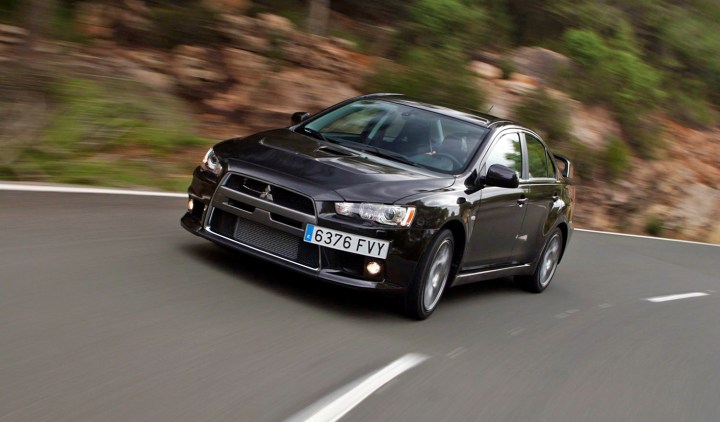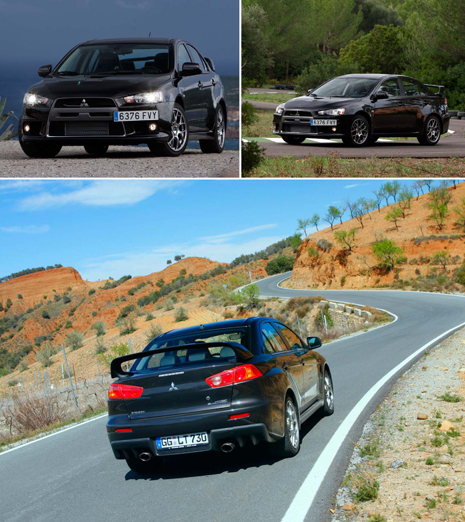Maverick Life
Mitsubishi Lancer Evo X: A legend draws to a close

It’s been exactly two decades since the first Mitsubishi Lancer Evo made its bow. In those 20 years, the muscle sedan has become a performance car legend, with a reputation built on its extraordinary success in the global rally arena. But the arrival of the 10th-generation Evo may also mark the end of an era. By DEON SCHOEMAN.
In standard trim, the Mitsubishi Lancer is a clean-cut and competent, yet somehow innocuous sedan that exudes more pragmatism than performance. But add the Evo moniker to that Lancer badge, and the result is a completely different animal.
Meet the Lancer Evo X: Mitsubishi’s latest – and some would say most advanced – high-performance sedan.
The Lancer Evo and motorsport are synonymous. More specifically, the Evo is one of the most prolific participants in rally series around the world, including the Production Car World Championship.
That close association with rallying has spawned successive generations of high-performance road cars that are cherished by their owners – and feared by their rivals.

The Evo X is the latest iteration of the legendary nameplate, but it may well be the last: with the world inexorably moving to smaller, lighter and more fuel-efficient cars, the viability (and desirability) of all-out muscle machines like the Evo is dwindling – and Mitsubishi is more likely to focus on hybrid and diesel models than on muscle cars in the future.
All of which makes the Evo X a particularly desirable member of the Lancer clan. Mitsubishi has endowed this model with an all-new lightweight engine, and a six-speed dual-clutch gearbox, while adding a raft of high-tech systems to optimise performance and handling.
Like its predecessors, there’s nothing subtle or introverted about the Evo X. This is a car that brashly announces its performance attentions, thanks to an aero kit that includes a massive rear wing, low front airdam, large cooling ducts, and a rear diffuser.
The front end is dominated by a gaping grille that would make a whale shark proud, providing plenty of cooling air to the massive radiator and the intercooler. Tapered headlights and low-mounted fog lamps provide some visual balance, but the off-set number plate looks like a cheap afterthought.

So over the top is the effect of all those aero aids that the twin exhaust tailpipes seem almost innocuous, while the specially lightened and strengthened BBS18-inch alloy wheels definitely look too small.
At least the chunky design offers a clear view of the scarlet Brembo brake callipers front and rear, as well as the generous brake discs.
The Evo X’s muscle is delivered courtesy of a high-tech two-litre four-cylinder engine with an intercooled twin-scroll turbocharger. It features a lightweight, rigid aluminium block and variable valve timing, and is credited with 217 kW of max power, together with 366 Nm of torque.
The new engine promises to be more responsive than its predecessor, thanks to a turbo that spools up quicker, and improvements to the valve timing system, while fuel consumption benefits, too.
The factory figures claim a 10,1 litres/100km consumption figure for the combined cycle, but in a foot-flat car like this, that’s a purely theoretical claim – our test car struggled to stay below 15 litres/100 km.
But the biggest news on the drivetrain front is the debut of a six-speed dual-clutch gearbox, complete with paddle shifts. The transmission offers three shift programmes – Normal, Sport and SuperSport – and frankly, it’s at its best in the latter mode, delivering the kind of fast and incisive up and downshifts one would expect of a performance sedan.
The gearbox feeds the urge to all four wheels via an active centre diff that allows a variable torque split between the front and rear axles, depending on traction requirements and driving style.
There’s also an active rear limited slip diff that offers yaw control by varying the torque between the rear wheels, depending on a number of parameters that includes lateral and longitudinal acceleration, steering angle and individual wheel speeds.
The suspension combines front MacPherson struts with a multilink rear configuration. As this is a European-spec car, it’s fitted with Eibach springs and Bilstein dampers that find an impressive balance between taut control and reasonable ride comfort.
Talking of comfort, the cabin of the Evo X offers most of the expected mod cons as standard – from electric windows to cruise control, from keyless starting to climate control. Plus there’s a 625-watt Rockford Fosgate sound system, complete with subwoofer, to keep the Evo’s occupants entertained.
Those Recaro bucket seats are superb when thrashing the Evo around a track, or through a mountain pass, but can be a little too uncompromising on extended trips. Seven airbags ensure that safety is well addressed, but boot capacity is disappointing, mainly due to the presence of a full-sized spare wheel.
With four-wheel drive, a long list of active driving aids, and a nicely sorted suspension, the Evo X should be a superb handler – and it is just that. But you need to drive the sedan with gusto to truly savour its talents. This is a car that responds to being caned with glee, and the faster you go, the better it gets.

Initially the steering feels too light, but once you start pushing into corners, the intensity of the feedback increases, and it gains both heft and precision. The electronics help to keep the nose from running wide into corners, but you soon learn to respond to what the chassis is telling you, and to adapt both steering and throttle input accordingly.
The all-wheel drive provides plenty of reassuring grip, but at 1,640kg, this is a heavy car, and you can feel the weight transfer under hard braking or when scything through corners. Fortunately, the rear diff helps to keep the Evo on the chosen line.
At altitude, there is some initial turbo lag, but this is fairly easily addressed once you get into the habit of keeping the engine on the boil.
The Evo X isn’t only rapid through a complex of corners: it’s also quick in straight-line terms. The claimed zero to 100 dash is completed in 5,6 seconds, while top speed comes to 242 km/h. Interestingly, the five-speed manual gearbox version is 0,2 sec quicker from zero to 100, but 2 km/h slower in top speed terms.
However, the Evo X is less about outright speed and more about the overall driving experience. As I’ve already mentioned, it’s a car that needs to be piloted with real enthusiasm to show its true colours – it feels ordinary when trudging along in suburban traffic.
The Mitsubishi Evo X is the last of its kind – a super-sedan with equal measures of muscle and technology, designed to shine on both road and track. That it may also be the last of a long lineage makes it even more desirable.
Even so, the R700,000 price tag means the Evo 10 is strictly for well-heeled fans. DM
VITAL STATISTICS: Mitsubishi Lancer Evo X
Engine: In-line four-cylinder, 1 998 cc, turbocharged
Gearbox: Six-speed TC-SST dual-clutch
Power: 217kW @ 6 500rpm
Torque: 366Nm @ 3 500rpm
0-100: km/h 5,6 sec
Top speed: 242 km/h
Fuel consumption: 14.8/100 km (test average)
CO2 emissions: 240g/km
Retail price: R699,000















 Become an Insider
Become an Insider